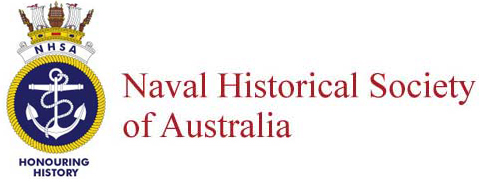- Author
- Kurumba
- Subjects
- History - pre-Federation, Ship design and development, Colonial navies
- Tags
-
- RAN Ships
- None noted.
- Publication
- March 1981 edition of the Naval Historical Review (all rights reserved)
Despite the many disappointments, and there were many, a fourth variant of torpedo gunboats, the Alarm class, were ordered in 1890. This group differed only slightly in appearance to the Sharpshooters, although they were rated at 810 tons. Torpedo armament remained unchanged, (except for five units which mounted three 18 inch TT) and gun armament was slightly increased through the addition of one Gardner machine gun. The eleven ships of the Alarm class were laid down between 1890-91 and completed 1893-94. HMS Speedy, the eighth member of the class to commission, was the only torpedo-gunboat to boast three funnels. Speedy was equipped with Thornycroft water tube boilers, instead of the old locomotive boilers that had been the accepted units for fast craft. She made 20.25 knots on trials and as a result proved a far more reliable vessel to perform her intended duties. The remaining ten vessels could make about 19.25 knots, but this was increased in Sheldrake when that ship was fitted with Babcock & Wilcox water tube boilers in 1898. The problem was therefore, that this class as a whole was slower than the proceeding class, being actually inferior instead of an improvement.
The Royal Navy’s last class of torpedo gunboats were known as the Dryad or Halcyon class. Unlike their predecessors, the five ships were completed with a raised poop, and had their funnels spaced well apart. Five 18 inch torpedo tubes were carried, with a gun armament of two 4.7 inch QF, four 6 pounder QF, and one five barrel Nordenfelt machine gun. This class, ordered in 1892, displaced 1,070 tons, but retained the same horsepower as the Alarm class. This meant another slip in construction; namely an advance in tonnage and size, but none in engine power. Resulting from this was more confusion as the boats actually acquitted themselves worse than all those constructed before them!
HMS Dryad, the first to commission could boast a maximum speed of only 18.2 knots, hardly sufficient to catch an old, worn out torpedo-boat. Results of the official trials of these five boats were: Dryad 18.2 knots, Halcyon 17.7, Harrier 19, Hazard 19 and Hussar 19.7. In appearance the Dryad class resembled an enlarged Rattlesnake, i.e. both poop and topgallant foc’sle fitted. The complement of Dryad numbered 115 officers and men.
Early versions of the torpedo-gunboats, the Rattlesnake and Grasshopper classes cost altogether £36,000stg apiece, the Sharpshooter and Alarm types from £50,000stg to £60,000stg each and the Dryad type about £75,000stg per ship. There is little doubt that the thirty-three vessels constructed were a failure. Even at moderate speeds, breakdowns were the norm and none were fit to accompany the fleet to sea for any length of time. On the other hand, several vessels were required to steam through gales in the Bay of Biscay, displaying excellent seakeeping qualities.
During 1909, five Sharpshooter and five Alarm class boats underwent conversion to minesweepers, and in this new guise gave useful service, proving a greater success than they had originally been designed and built for.
Five years later, three Dryad class were also equipped with sweeping gear and like their predecessors retained their original torpedo-gunboat armament. After the Great War the survivors were sold out of service and by 1922 the last boat, Leda, was broken up in Germany.
